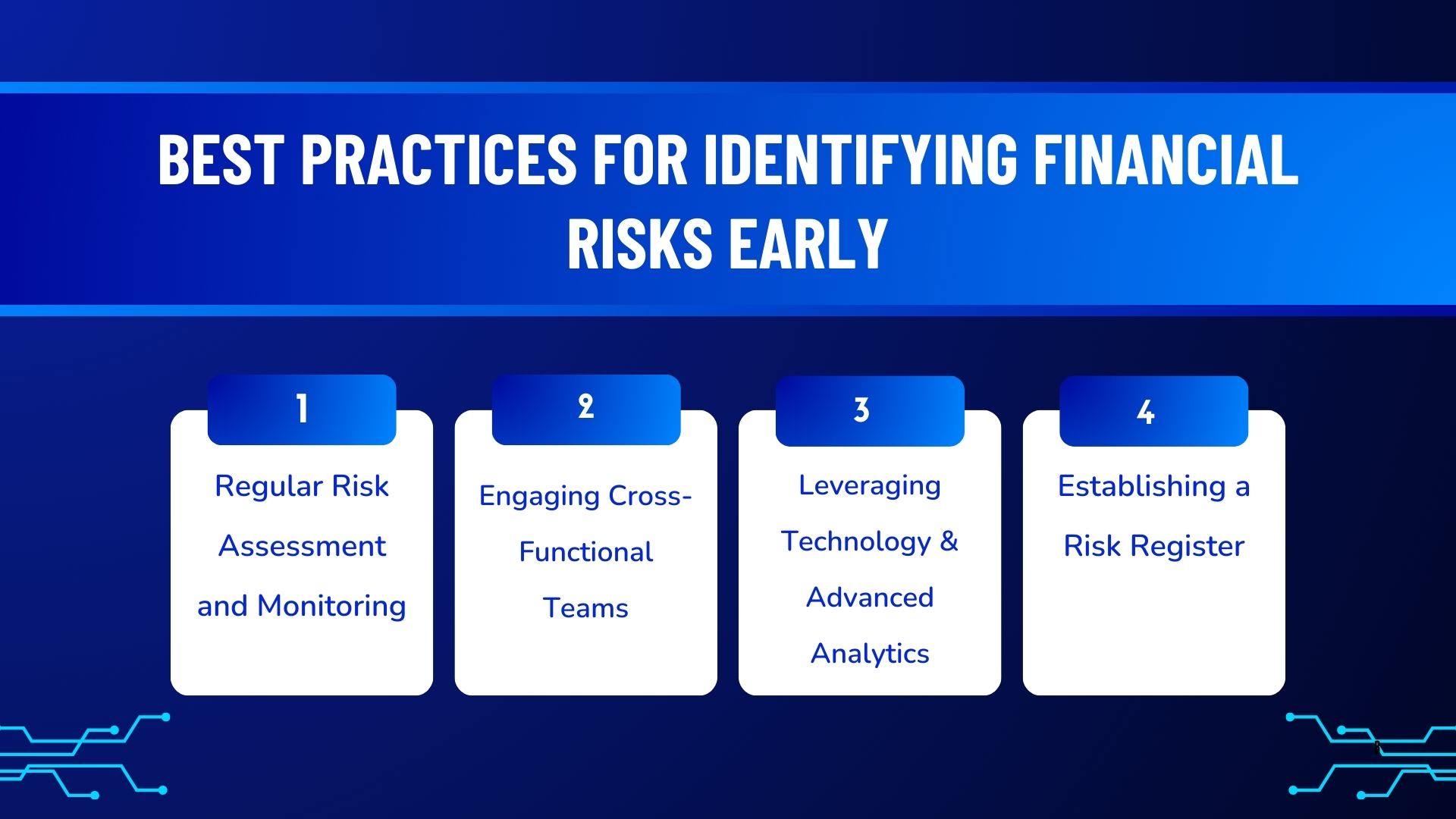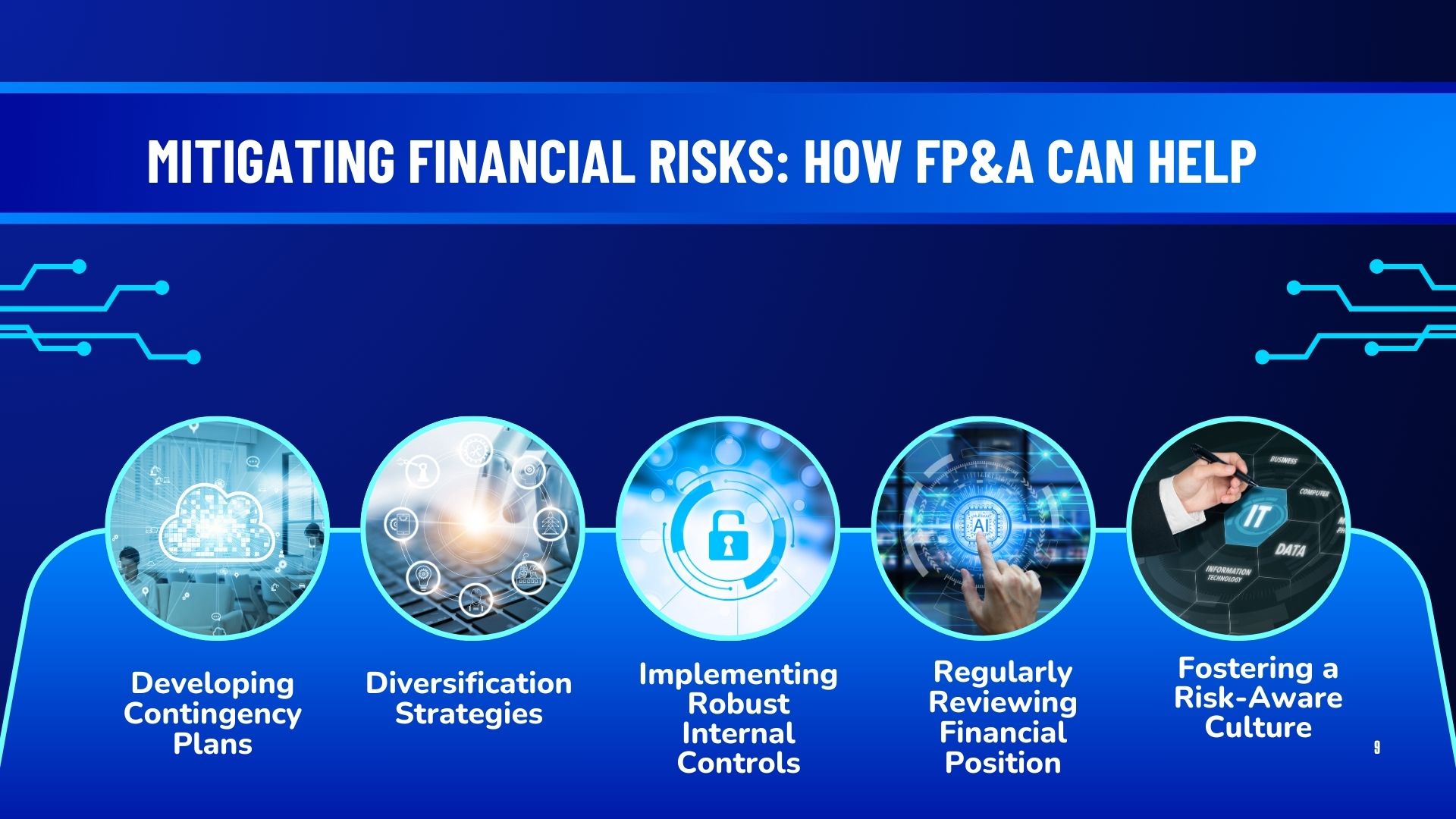FP&A and Risk Management: Identifying and Mitigating Financial Risks
In today’s unpredictable business environment, financial risks are an inherent part of any organization’s operations. From fluctuating market conditions to internal process failures, businesses must be proactive in identifying and mitigating financial risks to protect profitability, maintain liquidity, and drive sustainable growth. Financial Planning and Analysis (FP&A) plays a pivotal role in this process by equipping decision-makers with the insights and strategies needed to navigate risks effectively.
In this article, we’ll explore how FP&A teams can identify financial risks early in the planning process, the best practices for mitigating those risks, and how FP&A professionals can add value to risk management within an organization.
Understanding Financial Risks
Financial risks refer to any potential event or situation that could negatively affect an organization’s financial health. These risks can arise from both internal and external factors, and they can impact various aspects of the business, including cash flow, profitability, and capital structure.
Some of the most common types of financial risks include:
- Market Risk: The risk of financial loss due to changes in market conditions, such as fluctuations in stock prices, interest rates, commodity prices, or foreign exchange rates.
- Credit Risk: The risk that customers, suppliers, or other business partners may fail to meet their financial obligations, resulting in defaults or delayed payments.
- Liquidity Risk: The risk that an organization will not be able to meet its short-term financial obligations due to insufficient cash flow or working capital.
- Operational Risk: The risk of loss due to failed internal processes, systems, or human error, which can disrupt business operations.
- Regulatory and Compliance Risk: The risk of financial penalties or reputational damage due to failure to comply with industry regulations or legal requirements.
Effective risk management involves identifying, assessing, and mitigating these risks before they materialize and negatively impact the organization’s financial stability.

Best Practices for Identifying Financial Risks Early
FP&A teams play a critical role in identifying financial risks early in the planning process, ensuring that businesses can take proactive measures to mitigate potential threats. Here are some best practices for identifying financial risks:
- Regular Risk Assessment and Monitoring
FP&A professionals should continuously monitor the organization’s financial position and external market conditions. This involves:
- Analyzing Historical Data: Reviewing past financial performance, including profitability, cash flow, and working capital, to identify recurring trends and potential areas of vulnerability.
- Stress Testing and Scenario Analysis: Running stress tests and scenario analysis allows FP&A teams to model the financial impact of various risk factors, such as changes in market conditions, interest rates, or customer payment behavior. By simulating “what-if” scenarios, FP&A professionals can identify potential vulnerabilities in advance.
- Market and Economic Analysis: Staying informed about market trends, economic indicators, and industry-specific risks enables FP&A teams to anticipate potential risks stemming from external factors. This can include monitoring factors like inflation, geopolitical events, supply chain disruptions, and changes in consumer behavior.
- Engaging Cross-Functional Teams
Collaboration with other departments, such as sales, operations, HR, and IT, is essential to gain a holistic view of potential risks. For example:
- Sales: Understanding sales projections, customer payment patterns, and market conditions helps FP&A teams assess potential credit and market risks.
- Operations: Collaborating with operations teams to monitor production efficiency, inventory levels, and supply chain risks can help mitigate operational and liquidity risks.
- HR: Engaging with HR to track workforce stability, compensation trends, and hiring plans helps mitigate risks related to labor costs and productivity.
By integrating insights from various functions, FP&A teams can identify a broader range of risks, including those that might not be immediately apparent from financial data alone.
- Leveraging Technology and Advanced Analytics
Technology has revolutionized how FP&A teams identify and analyze financial risks. Modern financial planning software, data analytics tools, and AI-driven platforms can automate data collection, streamline risk analysis, and generate actionable insights.
- Automated Risk Dashboards: Implementing real-time risk dashboards allows FP&A professionals to monitor key financial metrics and identify any red flags as soon as they emerge. This could include cash flow issues, profit margin erosion, or increasing debt levels.
- Predictive Analytics: Using predictive analytics and machine learning models, FP&A teams can forecast potential risks based on historical patterns and trends, providing advanced warnings and early intervention opportunities.
- Integration of External Data: Combining internal financial data with external data sources (such as market trends, economic indicators, and customer behavior) enhances risk identification by offering a broader context.
- Establishing a Risk Register
A risk register is a comprehensive document that tracks and categorizes risks, their potential impact, and the steps taken to mitigate them. FP&A teams should maintain a risk register as part of their financial planning process. The register should include:
- Risk Identification: Describing the nature of each financial risk, whether it’s market, credit, liquidity, or operational.
- Likelihood and Impact: Assessing the probability of the risk occurring and its potential financial impact.
- Mitigation Strategies: Detailing the actions taken or planned to reduce the risk, such as diversifying investments, increasing reserves, or implementing cost-saving measures.
By maintaining an up-to-date risk register, FP&A teams can prioritize risks and ensure that mitigation efforts are aligned with business objectives.
Mitigating Financial Risks: How FP&A Can Help
Once financial risks have been identified, FP&A teams play a key role in helping organizations mitigate these risks. Here are some strategies that FP&A professionals can use to reduce financial risk exposure:
- Developing Contingency Plans
A well-structured contingency plan outlines specific actions that should be taken if certain risks materialize. For example:
- Liquidity Risk: FP&A teams can establish contingency plans for accessing working capital or securing short-term financing if cash flow issues arise.
- Market Risk: For market fluctuations, a contingency plan may involve hedging strategies, such as using derivatives to lock in favorable exchange rates or commodity prices.

By developing and testing contingency plans in advance, FP&A teams can help organizations react quickly to changing circumstances, reducing the potential financial impact of a risk event.
- Diversification Strategies
Diversification is a key strategy for mitigating risk, particularly in the context of market risk and operational risk. For example:
- Revenue Diversification: Relying on a single customer or industry for revenue can expose a business to significant risk if that sector faces a downturn. FP&A can help identify opportunities to diversify revenue streams by expanding into new markets or developing new products.
- Supplier and Operational Diversification: By working with multiple suppliers and ensuring operational flexibility, businesses can reduce the risk of supply chain disruptions. FP&A teams can help monitor supplier performance and assess the financial implications of diversifying the supply chain.
- Implementing Robust Internal Controls
Strong internal controls help mitigate operational and compliance risks by ensuring that financial transactions are accurate, transparent, and compliant with regulations. FP&A teams can work closely with the finance and accounting departments to:
- Monitor Compliance: Ensure that the business is adhering to regulatory requirements and industry standards to avoid penalties and reputational damage.
- Strengthen Operational Processes: Identify potential inefficiencies or weaknesses in internal processes, such as budgeting, financial reporting, and fraud detection.
- Regularly Reviewing Financial Position
FP&A teams should regularly review the organization’s financial position, adjusting for emerging risks and changes in market conditions. This includes:
- Revisiting Forecasts: Adjusting forecasts in light of new data or changes in the business environment helps ensure that the company is prepared for potential risks.
- Monitoring KPIs: Tracking key performance indicators (KPIs), such as cash flow, debt levels, and gross margins, enables FP&A teams to quickly identify any deviations from the expected financial trajectory.
- Fostering a Risk-Aware Culture
FP&A teams should work to foster a culture of risk awareness within the organization. By educating leadership and employees about the potential financial risks and the importance of proactive risk management, businesses can better anticipate and mitigate risks before they become critical.
Conclusion: The Role of FP&A in Financial Risk Management
In a world where financial risks are inevitable, proactive risk management is essential to safeguarding a company’s financial health. FP&A teams are uniquely positioned to identify, assess, and mitigate financial risks, making them key players in the risk management process.
By implementing best practices for risk identification, leveraging technology for advanced analytics, collaborating across departments, and developing robust mitigation strategies, FP&A teams can help organizations stay ahead of financial risks and make more informed, strategic decisions.
As the business landscape becomes more complex, FP&A’s role in risk management will continue to grow, offering businesses the insights and foresight needed to navigate the uncertainties ahead.
